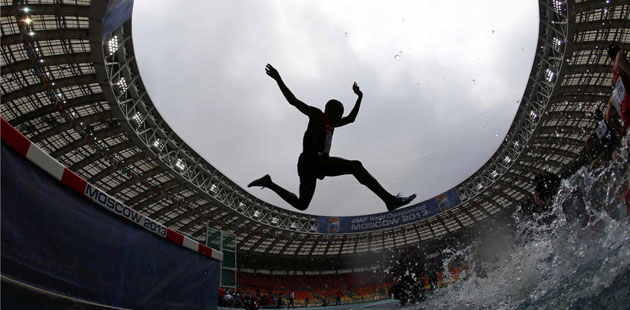To know the ethnic groups, read their prose
Updated: 2013-08-27 14:21
By Liu Jun (China Daily)
|
|||||||||||
 |
|
The June issue of Chutzpah! features authors from Chinese ethnic groups. |
Mongolian author Baoerj Yuanye stands out with a superb sense of humor in the short tale of a wrestler's ritual on the grassland.
Ye Fu depicts his family and neighbors in diaojiaolou (a wooden building propelled on columns to keep the rooms dry) of the Tujia people; Na Zhangyuan recounts the plague looming in an unsuspecting Yi village; Shi Qinghui sends the narrator to bring justice to an uncle who died mysteriously in a Dong village.
Such stories are full of color and smell, sound and taste, for they are dipped in the happiness and sadness of the authors' real lives.
There are quite a few young writers who show a great gift in storytelling.
Pema Tseden, a Tibetan film director, proves himself just as gifted with the pen in the tale of a stranger looking for a woman named Choma. He never explains why, but pays anyone 100 yuan ($16) if they find Choma.
"On the surface, globalization can cause cultural assimilation, but the world's true nature lies in difference," says Ou Ning, editor-in-chief of Chutzpah!, in an e-mail interview.
An established poet and artist, Ou has traveled around the world as curator of many art exhibitions.
"In the context of China, the value of non-Han writers is that they construct difference through writing in minority languages, thus making the ethnic groups they represent a common subject of history."
| Niche literary leader |
Related Stories
Shanghai Metro offers passengers books to borrow 2013-08-27 10:29
Book fair attracts more digital and foreign publishers 2013-08-27 09:17
New children's encyclopaedia published in Shanghai 2013-08-15 16:53
Kids' reading style 2013-08-15 15:19
Shanghai book fair takes measures to cool down readers 2013-08-15 09:06
Today's Top News
Foreigners nabbed for personal info trafficking
Caution urged in online reporting of violence
Group renting debate revived by boy's death
Public mixed over changes to train ticket returns
Concerns of growth at cost of environment
Scientists want stricter control of bird markets
Metro offers passengers books to borrow
Beijing seeks to cement relations with Singapore
Hot Topics
Lunar probe , China growth forecasts, Emission rules get tougher, China seen through 'colored lens', International board,
Editor's Picks

|

|

|

|

|

|







